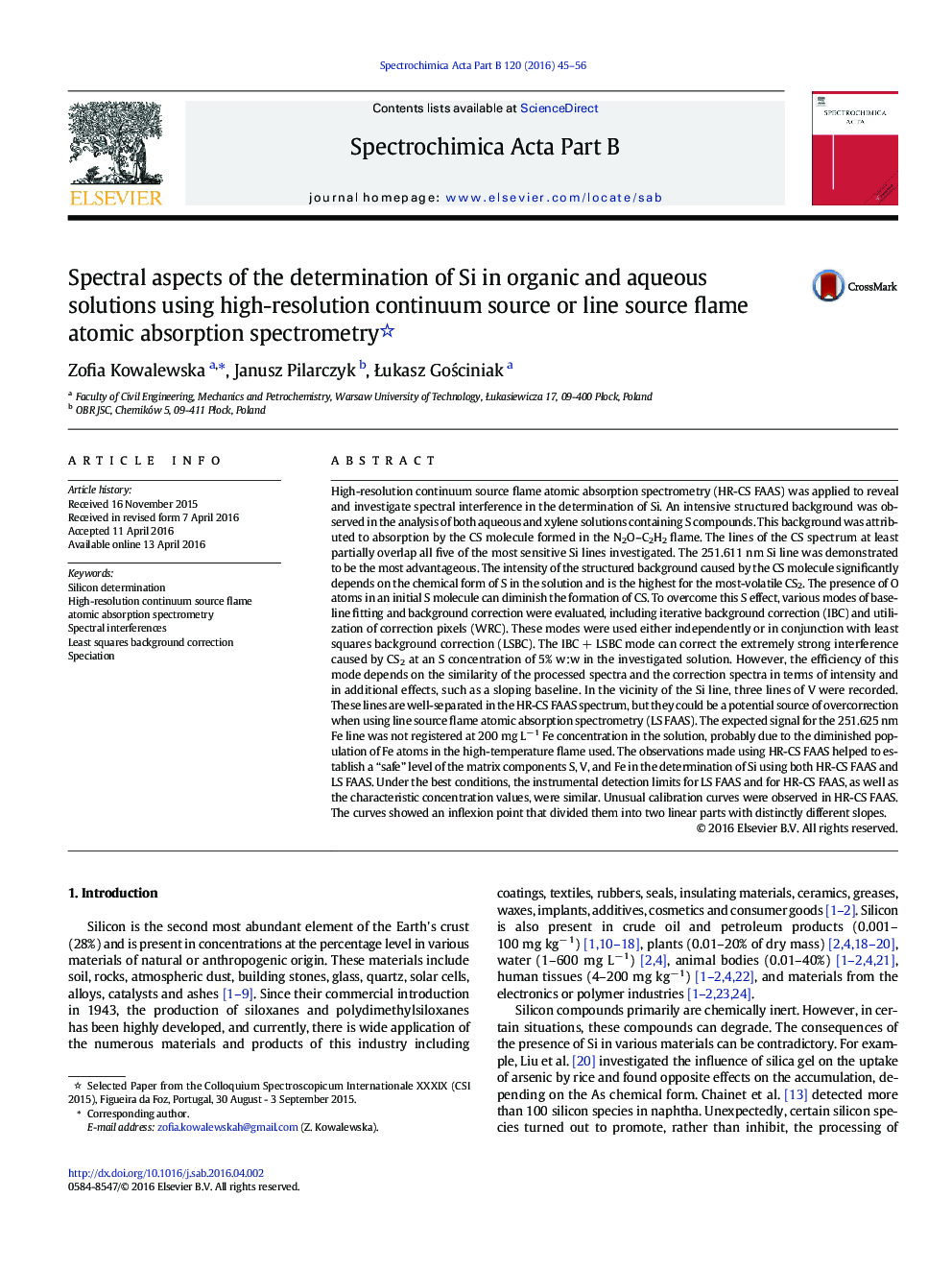| کد مقاله | کد نشریه | سال انتشار | مقاله انگلیسی | نسخه تمام متن |
|---|---|---|---|---|
| 1239660 | 1495683 | 2016 | 12 صفحه PDF | دانلود رایگان |

• The pattern of BG due to CS absorption does not depend on the chemical form of S in solution.
• The intensity of the CS absorption significantly depends on the form of S in solution.
• The mode of preliminary baseline fitting can influence efficiency of LSBC.
• The “safe” level of S, V and Fe in Si determination by LS FAAS or HR-CS FAAS is known.
• Unusual shapes of calibration curves have been observed in Si determination by HR-CS FAAS.
High-resolution continuum source flame atomic absorption spectrometry (HR-CS FAAS) was applied to reveal and investigate spectral interference in the determination of Si. An intensive structured background was observed in the analysis of both aqueous and xylene solutions containing S compounds. This background was attributed to absorption by the CS molecule formed in the N2O–C2H2 flame. The lines of the CS spectrum at least partially overlap all five of the most sensitive Si lines investigated. The 251.611 nm Si line was demonstrated to be the most advantageous. The intensity of the structured background caused by the CS molecule significantly depends on the chemical form of S in the solution and is the highest for the most-volatile CS2. The presence of O atoms in an initial S molecule can diminish the formation of CS. To overcome this S effect, various modes of baseline fitting and background correction were evaluated, including iterative background correction (IBC) and utilization of correction pixels (WRC). These modes were used either independently or in conjunction with least squares background correction (LSBC). The IBC + LSBC mode can correct the extremely strong interference caused by CS2 at an S concentration of 5% w:w in the investigated solution. However, the efficiency of this mode depends on the similarity of the processed spectra and the correction spectra in terms of intensity and in additional effects, such as a sloping baseline. In the vicinity of the Si line, three lines of V were recorded. These lines are well-separated in the HR-CS FAAS spectrum, but they could be a potential source of overcorrection when using line source flame atomic absorption spectrometry (LS FAAS). The expected signal for the 251.625 nm Fe line was not registered at 200 mg L− 1 Fe concentration in the solution, probably due to the diminished population of Fe atoms in the high-temperature flame used. The observations made using HR-CS FAAS helped to establish a “safe” level of the matrix components S, V, and Fe in the determination of Si using both HR-CS FAAS and LS FAAS. Under the best conditions, the instrumental detection limits for LS FAAS and for HR-CS FAAS, as well as the characteristic concentration values, were similar. Unusual calibration curves were observed in HR-CS FAAS. The curves showed an inflexion point that divided them into two linear parts with distinctly different slopes.
Journal: Spectrochimica Acta Part B: Atomic Spectroscopy - Volume 120, 1 June 2016, Pages 45–56